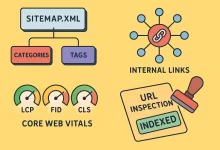Hey there, fellow coders! Ever felt frustrated with Cursor’s AI assistant randomly changing your carefully crafted code? Trust me, I’ve been there—many, many times.
But recently, I discovered the game-changer I desperately needed: Cursor Rules. Seriously, this feature completely transformed my experience from an annoying back-and-forth with the AI into seamless, predictable, and reliable interactions. Let me share what I’ve learned.

🧐 What Exactly Are Cursor Rules?
For those who haven’t jumped on this yet, Cursor Rules are essentially custom instruction files (.mdc files) that provide the AI with persistent context. They help keep the AI on track and significantly reduce the chances of your code being misunderstood or incorrectly edited.
Cursor Rules come in three flavors:
-
Project Rules (specific to each coding project)
-
User Rules (specific to you, the user)
-
.cursorrules (deprecated soon—best to avoid using now)
🛠️ Getting Started with Cursor Rules: Quick Setup
Setting them up is straightforward. Simply head to your Cursor settings, click on the Rules tab, and hit “Add new rule”. You can either manually create your rules or even let Cursor’s AI help generate them automatically.
Here’s a quick breakdown of rule types you’ll encounter:
-
Always: Always included in AI’s context.
-
Auto Attached: Automatically included when matching specified files.
-
Agent Requested: Included if the AI deems necessary.
-
Manual: Only triggered when manually mentioned.
🚀 My Best Practices for Writing Cursor Rules
Here’s my golden set of tips after plenty of trial and error:
Be Crystal Clear About Your Role
Tell the AI precisely who you are: a React developer, a Python expert, or a full-stack wizard. The clearer, the better.
State Explicitly What You Want (and Don’t Want!)
Never assume the AI knows your preferences. List them clearly:
-
Always use Tailwind classes for styling.
-
Prefer functional React components over class components.
-
Avoid deprecated libraries or methods.
Short and Sweet is Key
Keep your rule files short—ideally less than 500 lines. Too much context can overwhelm the AI, causing more confusion than clarity.
Provide Examples or Templates
Give the AI concrete examples of the code you want. Believe me, it’s a lifesaver when you’re dealing with complex structures or specific coding patterns.
📚 Where to Find Quality Rule Templates?
I found an awesome resource: Cursor Directory. This site offers tons of ready-to-use Cursor Rules covering popular stacks like React, Next.js, Tailwind CSS, and even niche tools like Supabase and TRPC.
One of my favorite setups combines TailwindCSS and Radix UI rules, clearly specifying design patterns, naming conventions, and coding best practices. It’s a total productivity booster!
💡 Lessons from My Own Pitfalls
I initially underestimated Cursor Rules, thinking they’re unnecessary overhead. Big mistake! After incorporating tailored rules into my workflow, I noticed my coding sessions became dramatically smoother. Less miscommunication, fewer rewrites, and a far better understanding between me and the AI.
Quick Tips for Best Results:
-
Regularly refine your rules based on your experiences.
-
Turn repetitive AI mistakes into clearly defined rules.
-
Automate what works consistently; manually intervene only when necessary.
🚧 Avoid This Common Mistake
If you’ve exchanged more than two rounds with Cursor’s AI without resolving your issue, pause. Instead of continuing down an inefficient path, revise your Cursor Rules or tweak your prompts. This simple habit saved me tons of time (and sanity)!
🎯 Wrap-Up: Your New Coding Superpower
In 2025, leveraging Cursor Rules effectively isn’t just a nice-to-have skill; it’s essential. Say goodbye to frustrating, endless AI edits, and hello to smooth, precise, and enjoyable coding.
Trust me—once you master Cursor Rules, you’ll never look back. Give it a shot today, and thank me later!

 FoxDoo Technology
FoxDoo Technology







